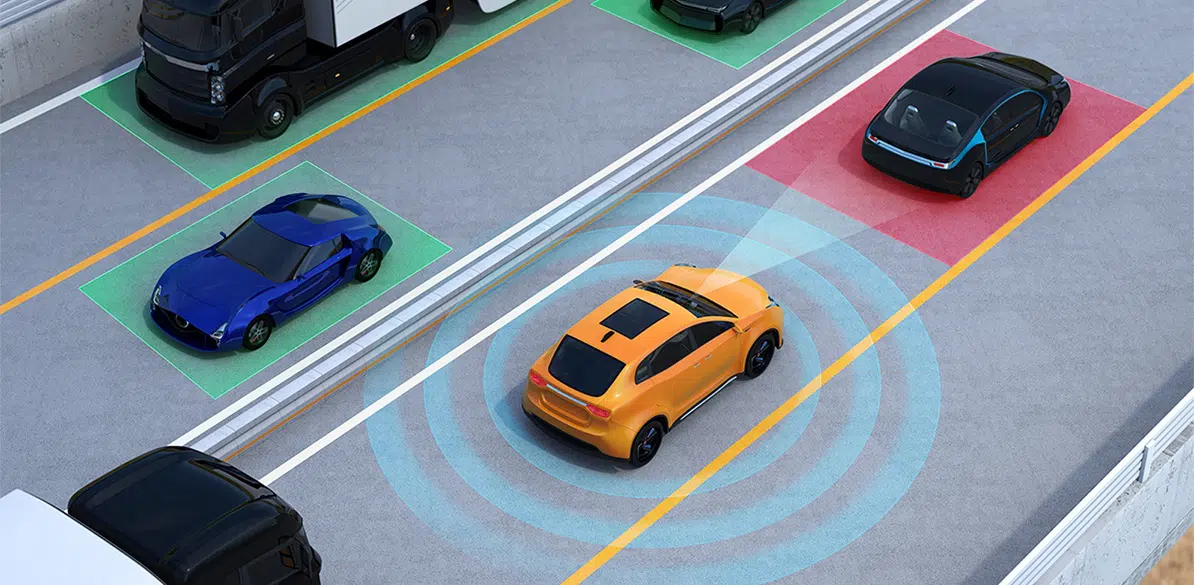Lane Departure Warning and Lane Keeping Assist
What is Lane Departure Warning and how does it work?

Objective
To constantly check the position of the vehicle within its lane. This system alerts the driver when they have changed or are about to change lane unintentionally. The lane-keeping assist system corrects the vehicle’s trajectory.
How it works
When the lane departure warning system or lane keeping assist is engaged, the camera identifies the lane markings and establishes the position of the vehicle in relation to the lines on the road. When the speed is above 65-80 km/h, the system analyzes the driver’s force of movement on the steering wheel and whether or not the indicators have been switched on.
By analyzing all of this, the system checks whether the driver is changing lanes intentionally or it is unintentional drift.
Systems that do not take into account the force that the driver is applying to the steering wheel always alert the driver when the lane line is crossed, misinterpreting as intentional lane changes. This can become annoying for the driver due to the repeated acoustic warnings emitted by the system.
Sometimes, the system uses the stereo effect of the sound system to inform the driver about which side the lane change took place, sounding the warning on either the right or left. However, the system may also employ a visual or tactile mechanism. In this case, it warns by vibrating the vehicle’s steering wheel or seat, simulating the feeling of the vehicle driving on rumble strips. This warning is intended to alert the driver that the vehicle is in danger of drifting out of its lane and prompt them to react.
The system can be switched off by the driver.
Components
- Camera/electronic data processing unit: this is usually assembled together with the data processing control unit and housed in the upper part of the windshield, next to the interior rearview mirror. Depending on the manufacturer, they may actually be integrated into the bracket of the inside rearview mirror. The data processing software is the most complex element of the system and allows a virtual lane to be constructed thanks to the image processing.
- Activation/deactivation button: when starting the vehicle, the system is activated by default, but the driver has the option of deactivating it, either via a button or through a menu.
- Steering wheel angle and rate of turn signal: this is used to determine the vehicle’s trajectory and to predict whether the lane departure is voluntary or involuntary.
- Steering force signal: used to determine the driver’s intention in the event of system correction and to override this.
- Electric steering: allows the vehicle to automatically stay in the lane if it detects an unintentional lane departure.
- Stability control (ESP): this is the system responsible for reporting the speed of the vehicle and applying the braking system to the wheels on the opposite side of the lines, if the lane keeping assist (LKAS) involves braking.
- Yaw, pitch and roll sensor: these sensors determine the dynamic movements of the vehicle on the road with respect to the virtual roadway as determined by the control unit. They establish whether the driver intends to leave the lane, and they are also used to automatically dynamically calibrate the system when there are variations in body height (e.g. when loading the trunk).
- Alarm signal: illuminated, via a warning light or message on the control panel, as well as acoustic.
- Connection indicator: light indicating that the system is connected.
Collisions avoided
- Lane encroachment.
- Road departures.
Effectiveness
According to a study carried out by the TRL in March 2018 for the European Commission, it decreases accidents by 53%.
Use and limitations
It is important to emphasize that the driver is always responsible for controlling the vehicle and can override the steering movement at any time (in the case of the lane keeping system).
Its efficiency is reduced if the lines cannot be clearly distinguished. This may occur on rainy or foggy days, or if the markings are hidden under mud or snow, or if they are poorly maintained.
In any case, these systems require the presence of lane marking lines.
Cost of the system
The price of the lane departure warning and lane keeping assist system ranges from 800 to 2,000 euros. It is usually included in driving assistance packages.
Mandatory
It is currently only mandatory on trucks and buses registered since 2015. It will not be mandatory on passenger cars and vans until July 2022 for new approvals, and 2024 for new registrations.
